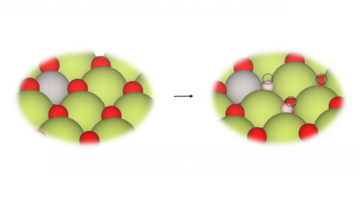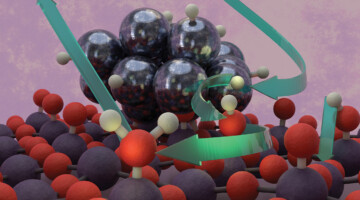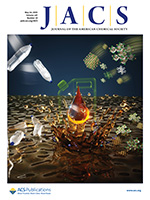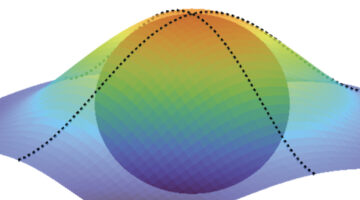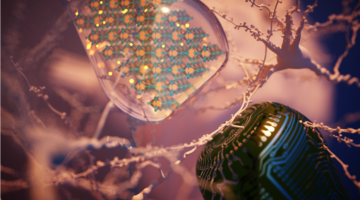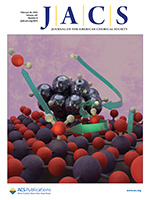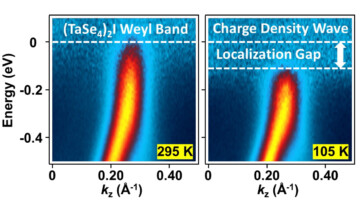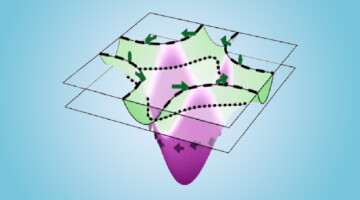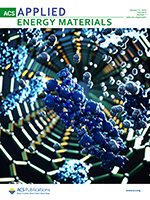A research team led by Berkeley Lab designed and fabricated catalysts by precisely tuning the co-localization of active metals—key catalytic centers for specific steps in reaction pathways—offering a new level of control over catalytic performance. Read more »
ALS Work Using Spectroscopy
These techniques are used to study the energies of particles that are emitted or absorbed by samples that are exposed to the light-source beam and are commonly used to determine the characteristics of chemical bonding and electron motion.
Catching “Hydrogen Spillover” onto a Catalytic Surface
Researchers uncovered the precise mechanism of hydrogen spillover (H2 splitting and migration) onto a catalytic surface by watching it happen under various conditions. The research lays the foundation for designing more efficient catalysts and storage materials essential for next-generation hydrogen energy technologies. Read more »![]()
![]()
Polyethylene Upcycling to Liquid Alkanes in Molten Salts under Neat and External Hydrogen Source-Free Conditions
Researchers found a way to turn single-use plastics (e.g., grocery bags and packaging) into useful liquid fuels, like components of gasoline or diesel, without needing high heat, rare metals, or added chemicals. The work presents a promising pathway to address the global plastic waste crisis, with both environmental and economic advantages. Read more »
Mapping the Quantum Landscape of Electrons in Solids
Researchers found a way to reconstruct quantum geometric tensors (QGTs)—mathematical entities that encode how an electron’s wave function is shaped by its quantum environment. The mapping of QGTs enables the discovery and control of novel quantum phenomena such as superconductivity and unconventional electronic phases. Read more »![]()
![]()
Mind-Blowing Materials: Mimicking Neurons for Faster Computing
Researchers used x-ray absorption spectroscopy and resonant inelastic x-ray scattering at the ALS to uncover the atomic-level mechanism of conductance switching for a neuromorphic material that has the potential for energy-efficient computing. Read more »
Operando Unveiling of Hydrogen Spillover Mechanisms on Tungsten Oxide Surfaces
An artistic depiction of hydrogen spillover on Pt/WO3, illustrating H2 activation and dissociation on Pt metal clusters, followed by hydrogen migration to WO3 for water formation. At elevated temperatures, water desorption and surface-to-bulk diffusion of hydrogen drive tungsten redox and oxygen vacancy formation on the surface of WO3. Read more »
Native American Interns Explore Engineering Opportunities at the Lab
This last summer, Berkeley Lab hosted three students from Navajo Technical University in a DOE-funded initiative that partners national labs with learning institutions whose populations are historically underrepresented in science. The goal is to increase enrollment of Native American students in Navajo Tech engineering programs. Read more »
Not All Gaps Are Created Equal
Researchers found that charge density waves (CDWs) in topological materials induce unconventional spectral gaps in the materials’ electronic structure. The finding that CDWs in topological materials can be essentially different from those in other materials should be carefully considered when designing quantum devices. Read more »![]()
Lattice-Dependent Spin Textures in High-Tc Superconductors
Researchers found that in bismuth-based cuprate superconductors, charge imbalances caused by lattice distortions generate persistent and universal patterns of spin polarization. The results supply a previously missing but essential ingredient in efforts to understand the mechanisms driving the electronic behavior of high-temperature superconductors. Read more »![]()
![]()
Nanoconfinement of High Hydrogen-to-Metal Ratio Lanthanum Hydrides in Functionalized Carbon Hosts
Metal hydrides with a high hydrogen content are important for materials-based hydrogen storage and high-temperature superconductivity. Nanoconfinement of metal hydrides in porous hosts is a promising strategy to tune the thermodynamic stability and control the hydrogen-to-metal ratio. X-ray absorption and photoelectron spectroscopy provided detailed information about the local chemical environment of LaHx species within carbon hosts. Read more »
- « Previous Page
- 1
- 2
- 3
- 4
- …
- 30
- Next Page »
